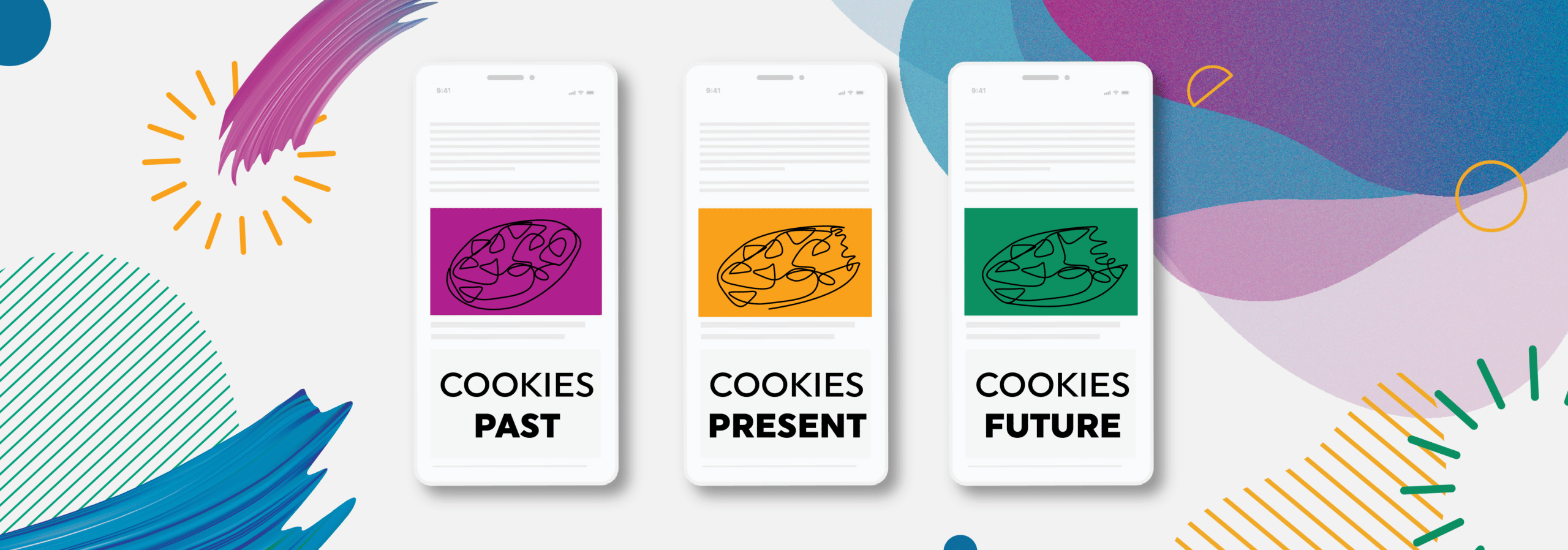What’s the deal with these Cookies?
Cookies, cookies, cookies – seems like that’s all we hear about these days. But are we talking AdTech or grandma’s recipes? Maybe both? Grab some pecan sandies, take a seat, and come learn a bit about the past, present, and future of your digital privacy.
I didn’t order any cookies!
What are cookies? Why do you want them? Why do you not? How do publishers and advertisers use cookies right now, and what’s to come?
Cookies, alternatively known as HTTP cookies or internet cookies, are nothing more than text files created by websites you visit. Think of them kind of like the VIP pass no one wants. Using these cookies, websites can keep you signed in, remember the preferences you choose, and provide you locally relevant content, such as the current weather nearby.
There are two main types of cookies – first-party and third-party. First-party cookies are — you guessed it — generated (or added to) by the first party, i.e., the website you’re visiting. These are the ones that save login information, preferences like language, and information you’ve entered into text fields. Generally, they provide both convenience for the user and marketing data for the website or organization based on the user’s interests and browsing tendencies.
These cookies are making me antsy!
Sounds innocuous enough, right? How can a few lines of text cause such hubbub? Enter third-party cookies. Not harmful in and of themselves, these are generated by third-party entities and usually triggered by an ad on a page a user visits. Their purpose is often to track users in order to “profile” them, compiling information such as age, interests, habits, and behavior data for use by advertisers. That one time you looked up bubble hockey, then saw ads for bubble hockey tables for the next week? Cookies.
Modern cookies have been used in website functionality as far back as 1994, so it’s only natural that they’ve become more or less inherent to this whole internet thing. But as the internet’s expanded and become integral to our day-to-day lives, the importance of privacy and security has also grown. Put simply, we want control over our data.
Where do we go from here?
Third-party cookies already have one foot in the grave. Safari and Firefox, two of the most popular internet browsers, have already phased them out. Google had planned to do so by 2023, but they’ve now shifted that to 2024. What’s an advertiser or a publisher supposed to do?
Google’s solution is a proprietary replacement called Topics, featuring an expansive list of, well, topics, and every website you visit will be categorized into what they see as the best fit. A user’s interests can then be utilized by advertisers. This way, a user’s identity won’t be required for them to be shown relevant ads.
Some say a person’s data is their biggest resource these days, and it’s hard to argue with that. Consumers want to keep their information, especially their personally identifiable information, to themselves. But even beyond that, cybercrime is on an upward trajectory, and third-party cookies certainly play a role.
How can a marketer succeed in the cookie-pocalypse?
The beta trial for Google Topics has already begun, but it may be some time before we know whether it gets a thumbs-up or down. Regardless, you don’t have to rely on cookies to provide consumers relevant advertising.
Contextual advertising is compliant and remains as effective as ever, and RevContent’s native cookieless solutions can help you target customers while protecting their privacy, building trust and loyalty in the process. It’s a win-win. So hear this: marketers, advertisers, and publishers CAN succeed without the use of third-party cookies.
At RevContent, we’re building a trusted cookieless ecosystem. Using insights, organic strategies, and the latest technology, we can help you create meaningful native ads that connect you with your target audience, all without relying on personal data. Contact us to start your cookieless future today!




